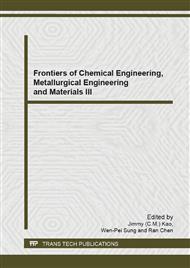p.740
p.745
p.749
p.754
p.758
p.762
p.766
p.770
p.777
Numerical Simulation and Experimental Study on Heat Pipe PV/T System
Abstract:
In this paper, carry on a reasonable assumption on photovoltaic/thermal (PV/T) system and establish a one-dimensional mathematical model of heat pipe PV/T systems based on the low of energy conservation. Conduct a numerical simulation of the temperature of glass cover-plate and the water in a tank on a certain condition (the flow is 250L/h, volume of the tank is 50L, initial temperature of supply water is 24°C). Build a comprehensive test-bed of heat pipe PV/T system and study the influence of different conditions on the system with control variate method, such as initial temperature, the yield of circulating water and the way of water storage. Generating capacity and quantity of heat and their efficiency can be obtained by put the parameter of Tianjin typical meteorological year into the mathematical model. The results shows that the average generating efficiency of heat pipe PV/T system is 17% and the average thermal efficiency is 23.8% and that the comprehensive efficiency can reach to 40.8%.
Info:
Periodical:
Pages:
758-761
Citation:
Online since:
August 2014
Authors:
Keywords:
Price:
Сopyright:
© 2014 Trans Tech Publications Ltd. All Rights Reserved
Share:
Citation:


